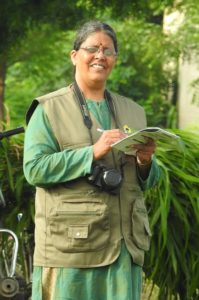 1. Please tell us something about yourself, where do you live and what do you do.
1. Please tell us something about yourself, where do you live and what do you do.
I live in Jalgaon, Maharashtra. I did a Masters in Arts (M.A), Masters in Library Science (M.Lib), and worked as a librarian from 1997 to 2018. I completed an ornithology course with BNHS and also underwent training in bird sound recording. I have attended the Common Birds Monitoring Program by BNHS. Other than birdwatching my hobbies include photography, singing, reading, and traveling.
I got interested in birdwatching in 2010 and decided to study the birds in the Jalgaon city area. For this, 14 grids of Jalgaon city were prepared and we visit these areas on a regular basis to document birds. So far I’ve recorded 235 species, local and migratory both.
I like to travel and have visited the various beaches and sanctuaries in Maharashtra, Gujarat, Chhattisgarh, Tamil Nadu, Karnataka, and Goa.
2. When and how did you get interested in birding?
I grew up in Amravati. Luckily our house was on the outskirts of the city, surrounded by mountain ranges and lakes. So wild animals and birds were an everyday sight. You can say that I’ve been fascinated with nature since childhood.
My stint with birding started in December 2010, when a Pakshimitra Sammelan (gathering of birdwatchers) was organized by Maharashtra Pakshimitra at the K.B.C.North Maharashtra University in Jalgaon. I attended it because I love birds. Various topics were discussed during the three-day programs- topics primarily about birds, their conservation, how to record them, etc. I got a lot of information about birds during the sammelan and immediately after this program, I participated in a bird census. After this, my husband Rajendra and I started birding regularly. We soon bought a camera and binoculars to pursue our hobby.
3. Do you have a favourite bird or birds? Why is it/are they your favourite?
Since childhood, I have been fascinated with the peacock because of the beautiful feathers. But now I realise the importance of their role in the environment rather than their appearance. It is very thrilling to observe a bird’s life cycle- from fledgling to adult. It is interesting to see their appearance, voice, and behaviour changing during this period. So I really like all the birds from a sparrow to a crow or a vulture. But my favourite is the Common Iora as it has many songs.
4. Where do you enjoy birding the most?
I travel a lot for birding. However, I prefer to see the birds in our area. Simply because we can go there as often as we can and whenever we want. Repeated observations can reveal a lot about the birds and their habitat. It also helps in understanding the effects of good and bad changes that take place at these sites. I thoroughly enjoy watching birds that visit my backyard at all times of the day. The moment I hear a bird song/ call I get excited and go to my window to look for it.
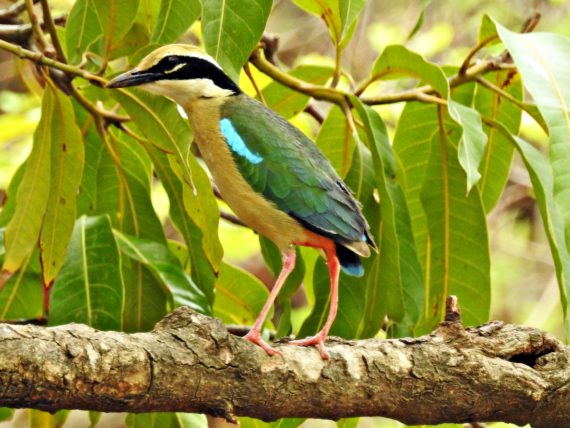
Indian Pitta ©Shilpa Gadgil
5. Do you have a birding partner or a group you enjoy birding with?
My husband and I go birding every day.
We carry out various activities throughout the year to create awareness about birds. One such example is conducting birdwatching and nature trails. In such exercises, we involve citizens who are bird and nature enthusiasts. I believe that if you are accompanied by an experienced and expert birdwatcher on the trail, you get a lot of information. I learned a lot about birds from Sharad Apte and Kiran Purandare. I learned the importance of bird sounds and birds call recording techniques from Apte Sir. While observing birds with Kiran Purandare Sir, I also learned to observe trees, vines, grasses, insects, butterflies, and other wildlife. He explained how important it is to pay attention to biodiversity monitoring and waterhole construction. I learned the virtue of perseverance from both Apte Sir and Purandare Sir. Dr.S. Balachandran from BNHS taught me the technique and importance of bird ringing. I learned from Nandkishore Dudhe from BNHS how to make a grid and how to count birds.
6. Anything on the birding bucket list? (Doesn’t have to be a bird, could be a place, witnessing a phenomenon, etc)
My main wish is to volunteer for bird ringing. Birds come in three seasons each year, summer, winter, and monsoon. I have a strong desire to do bird ringing to understand whether the same birds arrive at the same site each year. I wish to have a lightweight and high-quality sound recorder for better bird recordings. Currently, I record bird sounds on my mobile.
Another wish is to visit various bird sanctuaries in India. Preferably in Uttarakhand and Western Ghats.
7. Has eBird changed how you bird? How?
I was introduced to eBird in 2016. Since then I’ve been using it regularly. Due to eBird, this work got proper direction. eBird brought to light the work of birdwatchers around the world. Due to the various monthly challenges conducted by eBird, it was noticed that many aspects can be studied while observing birds. The guidelines set to win led to a certain kind of discipline so that I could meet a given target.
eBird also made it easier to record various aspects of birds’ ecology, their behaviour, upload photos and call recordings. Birdwatchers immediately get information about which bird was spotted, where, by whom, and when. We can now compare the current migration dates from the previously known. Bird identification errors can be corrected immediately and data can be updated.
8. Have you set any birding goals for the coming months?
Now that winter has begun, I would like to visit various sanctuaries and wetlands to record migratory birds.
9. What is your message for fellow birders?
‘कल करे सो आज कर, आज करे सो अभी कर’! (What you were going to do tomorrow do it today, do it today, and do it now). This popular Hindi expression means that every moment is important and one shouldn’t delay. Younger people have more years to their advantage to watch and learn about birds. Even if you can’t go out for some reason, watch birds regularly in the backyard and upload it in eBird. If there is no companion, it is okay to start on your own. If you are a beginner birdwatcher, a camera is not necessary and you can just start by observing the common birds around you.
I’m not experienced enough to give a message. But I would appeal to all bird enthusiasts that the environment is deteriorating at an alarming rate. Therefore, it is necessary to protect the birds and their habitat. Only by working together in gathering information can we hope to achieve this goal.

Eurasian Hobby ©Shilpa Gadgil
Cover Image: Pheasant-tailed Jacana ©Shilpa Gadgil

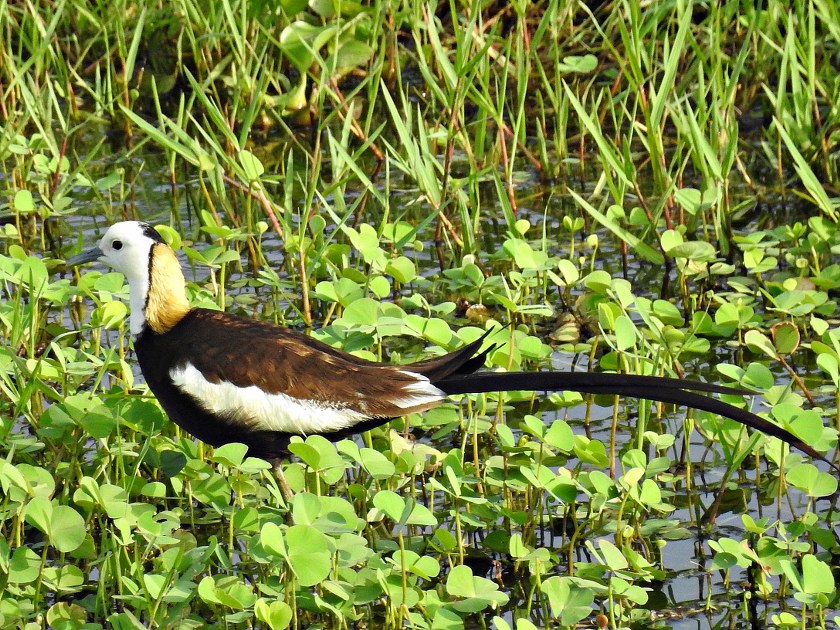
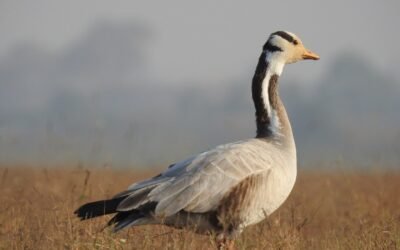
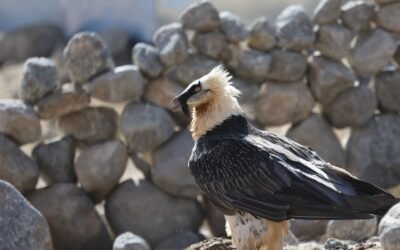
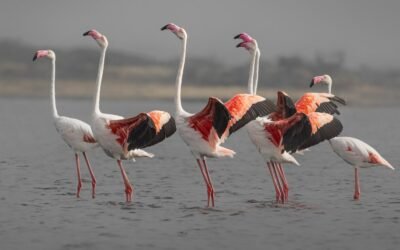
I have seen hornbill in jalgaon, took photograph and recorded also
Is this bird common in Jalgaon
Yes.